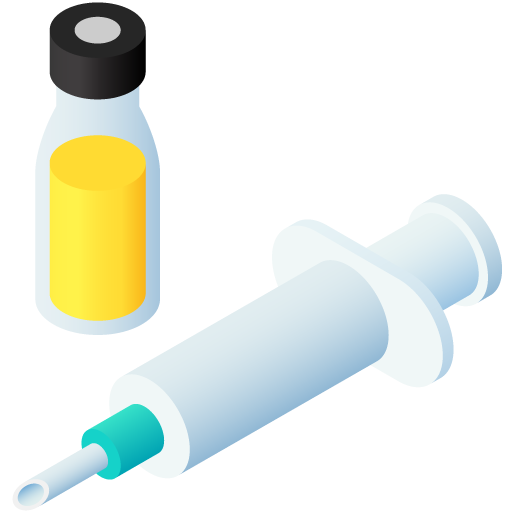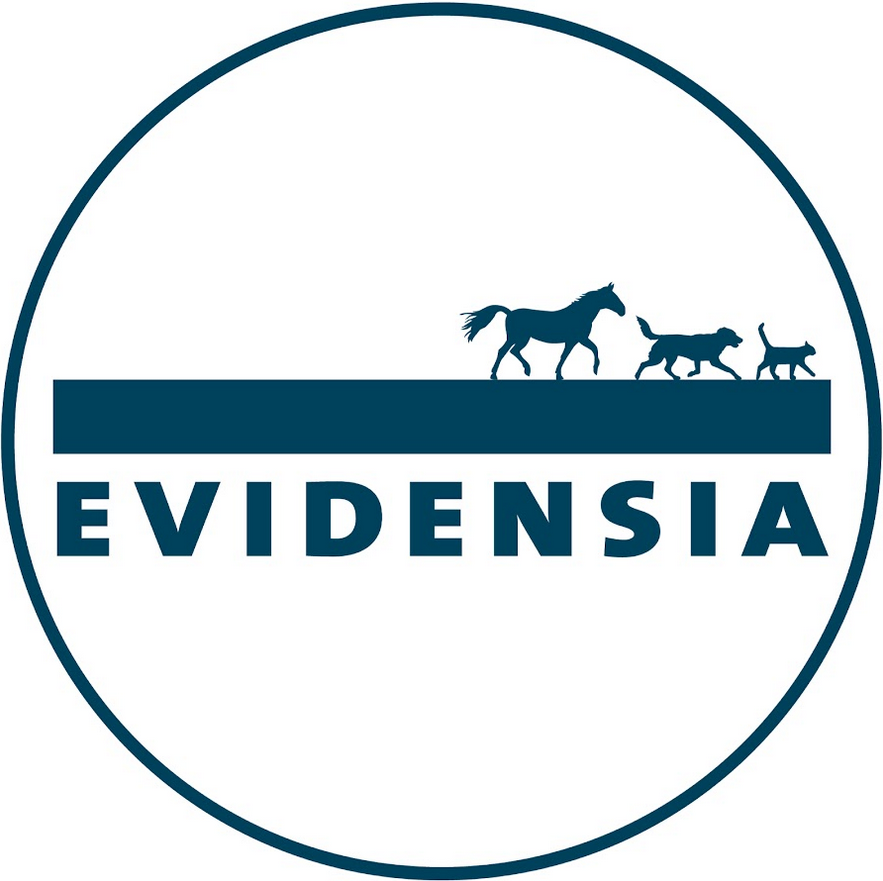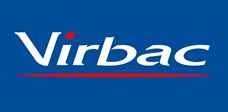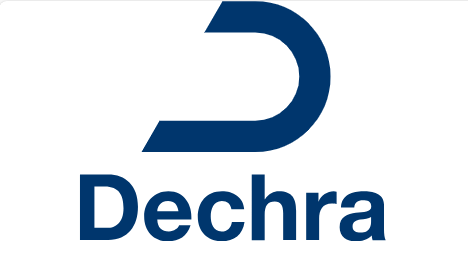Combination therapy
No results were found for your selected species
Alfaxan Multidose
Active substance
ATC code
Species
Dogs, cats and pet rabbits.
Indications
As an induction agent prior to inhalation anaesthesia in dogs, cats and pet rabbits.
As a sole anaesthetic agent for the induction and maintenance of anaesthesia for the performance of examination or surgical procedures in dogs and cats.
Dose to be administered and administration route
Dogs, cats and pet rabbits: For intravenous use (IV).
Induction of anaesthesia (dogs, cats and pet rabbits):
The induction dose of the veterinary medicinal product is based on data taken from controlled laboratory and field studies and is the amount of drug required for 9 of 10 patients (i.e. 90th percentile) to be successfully induced for anaesthesia.
Dosing recommendations for induction of anaesthesia are as follows:
|
DOGS |
CATS |
PET RABBITS |
||||
|
Un-premedicated |
Premedicated |
Un-premedicated |
Premedicated |
Un-premedicated |
Premedicated |
|
|
mg/kg |
3 |
2 |
5 |
5 |
5 |
4 |
|
ml/kg |
0.3 |
0.2 |
0.5 |
0.5 |
0.5 |
0.4 |
In dogs, cats and rabbits, an intravenous catheter should be used to administer the veterinary medicinal product (please refer to sections 3.5 and 3.6).
The dosing syringe should be prepared to contain the above dose. Administration should continue until the clinician is satisfied that the depth of anaesthesia is sufficient for endotracheal intubation, or until the entire dose has been administered. The necessary injection rate can be achieved by administration of one quarter (¼) of the calculated dose every 15 seconds, so that the total dose, if required, would be administered over the first 60 seconds. If, 60 seconds after complete delivery of this first induction dose, intubation is still not possible, one further similar dose may be administered to effect.
Maintenance of anaesthesia (dogs and cats):
Following induction of anaesthesia with the veterinary medicinal product, the animal may be intubated and maintained on the veterinary medicinal product or an inhalation anaesthetic agent. Maintenance doses of the veterinary medicinal product may be given as supplemental boluses or as constant rate infusion. The veterinary medicinal product has been used safely and effectively in dogs and cats for procedures lasting for up to one hour. The following doses suggested for maintenance of anaesthesia are based on data taken from controlled laboratory and field studies and represent the average amount of drug required to provide maintenance anaesthesia for a dog or cat. However, the actual dose will be based on the response of the individual patient.
Dosing recommendations for maintenance of anaesthesia are as follows:
|
DOGS |
CATS |
|||
|
Un-premedicated |
Premedicated |
Un-premedicated |
Premedicated |
|
|
Dose for constant rate infusion |
||||
|
mg/kg/hour |
8 - 9 |
6 - 7 |
10 - 11 |
7 - 8 |
|
mg/kg/minute |
0.13 - 0.15 |
0.10 - 0.12 |
0.16 - 0.18 |
0.11 - 0.13 |
|
ml/kg/minute |
0.013 - 0.015 |
0.010 - 0.012 |
0.016 - 0.018 |
0.011 - 0.013 |
|
Bolus dose for each 10 minutes maintenance |
||||
|
mg/kg |
1.3 - 1.5 |
1.0 - 1.2 |
1.6 - 1.8 |
1.1 - 1.3 |
|
ml/kg |
0.13 - 0.15 |
0.10 - 0.12 |
0.16 - 0.18 |
0.11 - 0.13 |
Where maintenance of anaesthesia is with the veterinary medicinal product for procedures lasting more than 5 to 10 minutes, a butterfly needle or catheter can be left in the vein, and small amounts of the veterinary medicinal product injected subsequently to maintain the required level and duration of anaesthesia. In most cases the average duration of recovery when using the veterinary medicinal product for maintenance will be longer than if using an inhalant gas as a maintenance agent.
Adverse reactions
Dogs and cats:
|
Very common (>1 animal / 10 animals treated) |
Apnoea1 |
|
Very rare (<1 animal / 10,000 animals treated, including isolated reports) |
Hyperactivity, vocalisation; Bradycardia, cardiac arrest; Convulsion, myoclonus, prolonged anaesthesia, tremor; Bradypnoea |
1Observed post induction. 44% of dogs and 19% of cats experienced post induction apnoea in clinical studies; the mean duration of apnoea in these animals was 100 seconds in dogs and 60 seconds in cats. Endotracheal intubation and oxygen supplementation should therefore be employed.
Pet rabbits:
|
Common (1 to 10 animals / 100 animals treated) |
Behavioural disorder1,2, head shake2; Ear flapping/twitching2; Apnoea3 |
1 Manifested as backing away.
2During intravenous (marginal ear vein) administration and, therefore, administration of the veterinary medicinal product via a pre-placed catheter in the marginal ear vein is recommended. Premedication may also prevent these reactions. In a field study, these reactions were not observed when rabbits had been premedicated with medetomidine in combination with either butorphanol or buprenorphine.
3Observed post-induction. The mean duration of apnoea in these animals was 53 seconds. Endotracheal intubation and oxygen supplementation should therefore be employed.
Reporting adverse events is important. It allows continuous safety monitoring of a veterinary medicinal product. Reports should be sent, preferably via a veterinarian, to either the marketing authorisation holder or its local representative or the national competent authority via the national reporting system. See package leaflet for respective contact details.
Dispensing
POM-V - Prescription Only Medicine – VeterinarianSUMMARY OF PRODUCT CHARACTERISTICS
1. NAME OF THE VETERINARY MEDICINAL PRODUCT
Alfaxan Multidose 10 mg/ml solution for injection for dogs, cats and pet rabbits
2. QUALITATIVE AND QUANTITATIVE COMPOSITION
Each ml of solution contains:
Active substance: Alfaxalone 10 mg
Excipients:
Ethanol 150 mg
Chlorocresol 1 mg
Benzethonium chloride 0.2 mg
For the full list of excipients, see section 6.1.
3. PHARMACEUTICAL FORM
Solution for injection
Clear colourless solution
4. CLINICAL PARTICULARS
4.1 Target species
Dogs, cats and pet rabbits
4.2 Indications for use, specifying the target species
As an induction agent prior to inhalation anaesthesia in dogs, cats and pet rabbits.
As a sole anaesthetic agent for the induction and maintenance of anaesthesia for the performance of examination or surgical procedures in dogs and cats.
4.3 Contraindications
Do not use in combination with other intravenous anaesthetic agents.
Do not use on animals with hypersensitivity to the active substance or any other excipients.
4.4 Special warnings for each target species
The analgesic properties of alfaxalone are limited, therefore appropriate perioperative analgesia should be provided in cases where procedures are anticipated to be painful.
4.5 Special precautions for use
(i) Special precautions for use in animals
The safety of the veterinary medicinal product in animals less than 12 weeks of age (dogs and cats) and 16 weeks of age (rabbits) has not been demonstrated.
Transient post induction apnoea frequently occurs, particularly in dogs – see section 4.6 for details. In such cases, endotracheal intubation and oxygen supplementation should be employed. Facilities for intermittent positive pressure ventilation should be available. In order to minimise the possibility of apnoea, administer the veterinary medicinal product by slow intravenous injection and not as a rapid dose.
In rabbits, oxygenation prior to administration of the product for induction of anaesthesia is essential in order to reduce the risk of life-threatening hypoxaemia post-induction, which can occur secondary to respiratory depression or apnoea.
In rabbits, an intravenous catheter should be used to administer the product due to the possibility of reactions (e.g. head-shaking and scratching at ear) during administration (please refer to section 4.6). The use of a preplaced catheter in dogs and cats is also recommended as best practice for anaesthetic procedures.
Especially when using higher doses of the veterinary medicinal product, a dosedependent respiratory depression may occur. Oxygen and/or intermittent positive pressure ventilation should be administered to counteract the threatening hypoxaemia/hypercapnea. This should be particularly important in risky anaesthetic cases and whenever the anaesthesia is to be carried out for a longer period of time. In rabbits, oxygenation is essential before induction of anaesthesia and throughout the entire anaesthetic procedure.
In dogs and cats, the dose interval for maintenance of anaesthesia by intermittent bolus administration may require lengthening by more than 20%, or the maintenance dose by intravenous infusion may require reduction by more than 20%, when hepatic blood flow is severely diminished or hepatocellular injury is severe. In cats or dogs with renal insufficiency, doses for induction and maintenance may require reduction.
As with all general anaesthetic agents:
• It is advisable to ensure that dogs and cats have been fasted before receiving the anaesthetic. Rabbits should not be fasted, but food should be removed one hour before anaesthesia.
• As with other intravenous anaesthetic agents, caution should be exercised in animals with cardiac or respiratory impairment, or in hypovolaemic or debilitated animals.
• Additional monitoring is advised and particular attention should be paid to respiratory parameters in aged animals, or in cases where there may be additional physiological stress imposed by pre-existing pathology, shock or caesarean section.
• Following induction of anaesthesia, the use of an endotracheal tube is recommended to maintain airway patency.
• It is advisable to administer supplemental oxygen during maintenance of anaesthesia.
• Respiratory embarrassment may occur – ventilation of the lungs with oxygen should be considered if haemoglobin saturation with oxygen (SpO2%) falls below 90% or if apnoea persists for longer than 60 seconds.
• If cardiac arrhythmias are detected, attention to respiratory ventilation with oxygen is the first priority followed by appropriate cardiac therapy or intervention.
During recovery, it is preferable that animals are not handled or disturbed. In dogs and cats, this may lead to paddling, minor muscle twitching or movements that are more violent. While better avoided, such reactions are clinically insignificant. Postanaesthetic recovery should thus take place in appropriate facilities and under sufficient supervision. Use of a benzodiazepine as the sole premedicant in dogs and cats may increase the probability of psychomotor excitement.
Muscle twitching/tremors may be observed in a small proportion of rabbits anaesthetised with the veterinary medicinal product. However, such reactions are not considered to be clinically significant.
(ii) Special precautions to be taken by the person administering the veterinary medicinal product to animals
This product is a sedative, exercise caution to avoid accidental self-injection.
Preferably use a guarded needle until the moment of injection.
In case of accidental self-injection seek immediate medical attention and show the product literature.
The product may cause irritation if it comes into contact with the skin or eyes. Rinse any splashes from skin or eyes immediately with water.
4.6 Adverse reactions (frequency and seriousness)
In clinical studies using the veterinary medicinal product, post induction apnoea, which was defined as the cessation of breathing for 30 seconds or more, was very common in dogs and cats, and common in rabbits.
Based on post marketing safety experience, neurological signs (convulsions, myoclonus, tremor, prolonged anaesthesia), cardio respiratory signs (cardiac arrests, bradycardia, bradypnea) and behavioural signs (hyperactivity, vocalisation) have been reported very rarely (.
The frequency of adverse reactions is defined using the following convention:
- very common (more than 1 in 10 animals treated displaying adverse reaction(s))
- common (more than 1 but less than 10 animals in 100 animals treated)
- uncommon (more than 1 but less than 10 animals in 1,000 animals treated)
- rare (more than 1 but less than 10 animals in 10,000 animals treated)
- very rare (less than 1 animal in 10,000 animals treated, including isolated reports).
The mean duration of apnoea in these animals was 100 seconds in dogs, 60 seconds in cats and 53 seconds in rabbits. Endotracheal intubation and oxygen supplementation should therefore be employed.
In rabbits, defensive reactions (such as head-shaking, ear flicking and backing away) are commonly observed during intravenous (marginal ear vein) administration and, therefore, administration of the product via a pre-placed catheter in the marginal ear vein is recommended. Premedication may also prevent these reactions. In a field study, these reactions were not observed when rabbits had been premedicated with medetomidine in combination with either butorphanol or buprenorphine.
4.7 Use during pregnancy, lactation or lay
The safety of the veterinary medicinal product has not been established in cases where pregnancy is to be continued or during lactation. Its effects upon fertility have not been evaluated. However, studies using alfaxalone in pregnant mice, rats and rabbits have demonstrated no deleterious effects on gestation of the treated animals, or on the reproductive performance of their offspring. The product should be used in pregnant animals according to the risk-benefit assessment performed by the veterinarian. The product has been safely used in dogs for the induction of anaesthesia prior to delivery of puppies by caesarean section. In these studies, dogs were not premedicated, a dose of 1-2 mg/kg was drawn up (i.e. slightly lower than the usual 3 mg/kg dose, see section 4.9) and the product was administered as recommended, to effect.
4.8 Interaction with other medicinal products and other forms of interaction
In dogs and cats, the veterinary medicinal product has been demonstrated to be safe when used in combination with the following premedicant classes:
|
Drug Class |
Examples |
|
Phenothiazines |
Acepromazine maleate |
|
Anticholinergic agents |
Atropine sulfate |
|
Benzodiazepines |
Diazepam, midazolam hydrochloride |
|
Alpha-2-adrenoceptor agonists |
Xylazine hydrochloride, medetomidine hydrochloride |
|
Opiates |
Methadone, morphine sulfate, butorphanol tartrate, buprenorphine hydrochloride |
|
NSAIDs |
Carprofen, meloxicam |
During clinical studies in rabbits, the veterinary medicinal product was used safely with the following premedicant combinations: (i) medetomidine hydrochloride in combination with buprenorphine hydrochloride or butorphanol tartrate, and (ii) midazolam hydrochloride in combination with buprenorphine hydrochloride or butorphanol tartrate.
The concomitant use of other CNS depressants should be expected to potentiate the depressant effects of the veterinary medicinal product, necessitating cessation of further administration of the veterinary medicinal product when the required depth of anaesthesia has been reached.
The use of one premedicant or a combination of premedicants often reduces the dose of the veterinary medicinal product required.
Premedication with alpha-2-adrenoceptor agonists such as xylazine and medetomidine can markedly increase the duration of anaesthesia in a dose dependent fashion. In order to shorten recovery periods it may be desirable to reverse the actions of these premedicants.
Benzodiazepines should not be used as sole premedicants in dogs and cats as the quality of anaesthesia in some patients may be sub-optimal. Benzodiazepines may be used safely and effectively in combination with other premedicants and the veterinary medicinal product.
Refer to section 4.3.
4.9 Amounts to be administered and administration route
For intravenous use
Induction of anaesthesia (dogs, cats and pet rabbits):
The induction dose of the veterinary medicinal product is based on data taken from controlled laboratory and field studies and is the amount of drug required for 9 of 10 patients (i.e. 90th percentile) to be successfully induced for anaesthesia.
Dosing recommendations for induction of anaesthesia are as follows:
|
|
DOGS |
CATS |
RABBITS |
|||
|
|
Unpremedicated |
Premedicated |
Unpremedicated |
Premedicated |
Unpremedicated |
Premedicated |
|
mg/kg |
3 |
2 |
5 |
5 |
5 |
4 |
|
ml/kg |
0.3 |
0.2 |
0.5 |
0.5 |
0.5 |
0.4 |
In dogs, cats and rabbits, an intravenous catheter should be used to administer the product (please refer to sections 4.5i and 4.6).
The dosing syringe should be prepared to contain the above dose. Administration should continue until the clinician is satisfied that the depth of anaesthesia is sufficient for endotracheal intubation, or until the entire dose has been administered. The necessary injection rate can be achieved by administration of one quarter (¼) of the calculated dose every 15 seconds, so that the total dose, if required, would be administered over the first 60 seconds. If, 60 seconds after complete delivery of this first induction dose, intubation is still not possible, one further similar dose may be administered to effect.
Maintenance of anaesthesia (dogs and cats):
Following induction of anaesthesia with the veterinary medicinal product, the animal may be intubated and maintained on the veterinary medicinal product or an inhalation anaesthetic agent. Maintenance doses of the veterinary medicinal product may be given as supplemental boluses or as constant rate infusion. The veterinary medicinal product has been used safely and effectively in dogs and cats for procedures lasting for up to one hour. The following doses suggested for maintenance of anaesthesia are based on data taken from controlled laboratory and field studies and represent the average amount of drug required to provide maintenance anaesthesia for a dog or cat. However the actual dose will be based on the response of the individual patient.
Dosing recommendations for maintenance of anaesthesia are as follows:
|
|
DOGS |
CATS |
||
|
|
Unpremedicated |
Premedicated |
Unpremedicated |
Premedicated |
|
|
Dose for constant rate infusion |
|||
|
mg/kg/hour |
8 - 9 |
6 - 7 |
10 - 11 |
7 - 8 |
|
mg/kg/minute |
0.13 - 0.15 |
0.10 - 0.12 |
0.16 - 0.18 |
0.11 - 0.13 |
|
ml/kg/minute |
0.013 - 0.015 |
0.010 - 0.012 |
0.016 - 0.018 |
0.011 - 0.013 |
|
|
Bolus dose for each 10 minutes maintenance |
|||
|
mg/kg |
1.3 - 1.5 |
1.0 - 1.2 |
1.6 - 1.8 |
1.1 - 1.3 |
|
ml/kg |
0.13 - 0.15 |
0.10 - 0.12 |
0.16 - 0.18 |
0.11 - 0.13 |
Where maintenance of anaesthesia is with the veterinary medicinal product for procedures lasting more than 5 to 10 minutes, a butterfly needle or catheter can be left in the vein, and small amounts of the veterinary medicinal product injected subsequently to maintain the required level and duration of anaesthesia. In most cases the average duration of recovery when using the veterinary medicinal product for maintenance will be longer than if using an inhalant gas as a maintenance agent.
4.10 Overdose (symptoms, emergency procedures, antidotes), if necessary
Acute tolerance to overdose has been demonstrated up to 10 times the recommended dose of 2 mg/kg in the dog (i.e. up to 20 mg/kg), up to 5 times the recommended dose of 5 mg/kg in the cat (i.e. up to 25 mg/kg) and up to 3 times the recommended dose in the rabbit (i.e. up to 15 mg/kg). These excessive doses delivered over 60 seconds caused apnoea and a temporary decrease in mean arterial blood pressure. The decrease in blood pressure is not life threatening and is compensated for by changes in heart rate. These animals can be treated solely by intermittent positive pressure ventilation (if required) with either room air or, preferably, oxygen. Recovery is rapid with no residual effects.
4.11 Withdrawal period(s)
Do not use in rabbits intended for human consumption.
5. PHARMACOLOGICAL PROPERTIES
Pharmacotherapeutic group: Nervous system: other general anaesthetics, alfaxalone.
ATCvet code: QN01AX05.
5.1 Pharmacodynamic properties
Alfaxalone (3-α-hydroxy-5-α-pregnane-11,20-dione) is a neuroactive steroid molecule with properties of a general anaesthetic. The primary mechanism for the anaesthetic action of alfaxalone is modulation of neuronal cell membrane chloride ion transport, induced by binding of alfaxalone to GABAA cell surface receptors.
5.2 Pharmacokinetic particulars
In cats following a single intravenous dose of alfaxalone at 5 mg/kg bw, the mean plasma elimination half-life (t1/2) is approximately 45 minutes. Plasma clearance is 25 ml/kg/min. Volume of distribution is 1.8 L/kg.
In dogs following a single intravenous dose of alfaxalone at 2 mg/kg bw, the mean plasma elimination half-life (t1/2) is approximately 25 minutes. Plasma clearance is 59 ml/kg/min. Volume of distribution is 2.4 L/kg.
In rabbits following a single intravenous dose of alfaxalone at 5 mg/kg bw, the mean plasma elimination half-life (t1/2) is approximately 46 minutes. Plasma clearance is 56 ml/kg/min. Volume of distribution is 3.6 L/kg.
In dogs, cats and rabbits the elimination of alfaxalone demonstrates non-linear (dosedependent) pharmacokinetics.
In vitro cat and dog hepatocyte studies show that alfaxalone experiences both Phase I (cytochrome P450 dependent) and Phase II (conjugation dependent) metabolism.
Both cats and dogs form the same five (5) Phase I alfaxalone metabolites. The Phase II metabolites observed in cats are alfaxalone sulphate and alfaxalone glucuronide, while alfaxalone glucuronide is observed in the dog.
Alfaxalone metabolites are likely to be eliminated from the dog, cat and rabbit by the hepatic/faecal and renal routes, similar to other species.
6. PHARMACEUTICAL PARTICULARS
6.1 List of excipients
Hydroxypropylbetadex
Sodium Chloride
Disodium Phosphate
Potassium Dihydrogen Phosphate
Chlorocresol
Benzethonium Chloride
Ethanol
Sodium Hydroxide (for pH adjustment)
Hydrochloric Acid, Concentrated (for pH adjustment)
Water for Injections
6.2 Major incompatibilities
In the absence of compatibility studies, this veterinary medicinal product must not be mixed with other veterinary medicinal products.
6.3 Shelf life
Shelf life of the veterinary medicinal product as packaged for sale: 3 years. Shelf life after first opening the immediate packaging: 28 days.
6.4 Special precautions for storage
Store below 25°C. Keep the container in the outer carton in order to protect from light.
6.5 Nature and composition of immediate packaging
Cardboard box with one glass vial of 10 ml or 20 ml with a bromobutyl rubber stopper and aluminium cap. Not all pack sizes may be marketed.
6.6 Special precautions for the disposal of unused veterinary medicinal product or waste materials derived from the use of such products
Any unused veterinary medicinal product or waste material derived from such veterinary medicinal product should be disposed of in accordance with local requirements.
7. MARKETING AUTHORISATION HOLDER
Zoetis UK Limited
1st Floor, Birchwood Building
Springfield Drive
Leatherhead
Surrey
KT22 7LP
8. MARKETING AUTHORISATION NUMBER
Vm 42058/4218
9. DATE OF FIRST AUTHORISATION
20 April 2018
10. DATE OF REVISION OF THE TEXT
August 2023

Approved: 14 August 2023
 TRUSTED SOURCE
TRUSTED SOURCE









